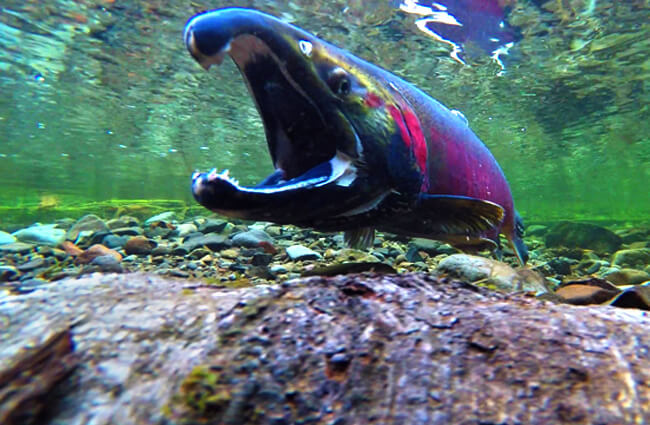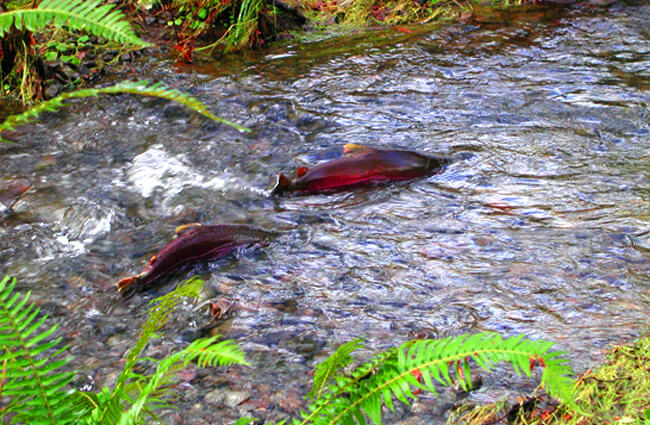The Remarkable Life of the Coho Salmon
The Coho Salmon, scientifically known as Oncorhynchus kisutch, is a captivating species that embodies resilience, adaptation, and the intricate connections within our ecosystems. Often referred to as the silver salmon due to its vibrant coloration during spawning runs, this Pacific salmon plays a vital role in the health of coastal ecosystems and holds cultural significance for many communities. This guide delves into the fascinating world of the Coho Salmon, exploring its life cycle, habitat, behavior, and its importance to both the natural world and human societies.

Origins and Evolutionary History
Salmon, as a group, have a deep evolutionary history stretching back millions of years. The ancestors of modern salmon likely originated in freshwater environments in North America and Asia. Over time, they developed the unique anadromous life cycle—spending part of their lives in freshwater and part in saltwater—allowing them to exploit resources in both environments. The Coho Salmon specifically diverged from other Pacific salmon species relatively recently, adapting to specific ecological niches along the Pacific coast. Fossil records and genetic analysis continue to refine our understanding of their evolutionary journey.
Habitat and Distribution
Coho Salmon are native to the Pacific Northwest, ranging from California to Alaska, and across the Pacific Rim to Russia and Japan. They require specific habitat conditions to thrive. As juveniles, they inhabit freshwater streams and rivers, seeking out cool, clear water with gravel beds for rearing. These areas provide shelter from predators and ample food resources. As they mature, they migrate to the ocean, where they spend one to three years feeding and growing. Adult Coho Salmon return to their natal streams to spawn, often navigating hundreds of miles upstream. The availability of suitable spawning habitat, free from barriers like dams or excessive sedimentation, is crucial for their survival.
Diet and Feeding Habits
The Coho Salmon’s diet varies depending on its life stage. Juvenile Coho Salmon feed primarily on aquatic insects, crustaceans, and small fish. In the ocean, their diet shifts to include a wider range of prey, such as herring, sardines, squid, and other small fish. They are opportunistic feeders, taking advantage of abundant food sources. Their predatory behavior plays a key role in regulating prey populations and maintaining the health of marine ecosystems.

Life Cycle and Reproduction
The Coho Salmon life cycle is a remarkable feat of biological engineering. It begins in freshwater streams where females construct nests, called redds, in gravel beds. These redds are depressions excavated with their tails. Females deposit hundreds to thousands of eggs into the redd, which are then fertilized by males. After fertilization, the female covers the eggs with gravel to protect them from predators and silt.
The eggs incubate for several weeks, depending on water temperature. Once hatched, the young salmon, called alevin, remain in the gravel for a short period, feeding off their yolk sac. They then emerge as fry and begin actively feeding. These fry grow into parr, developing distinctive vertical markings that provide camouflage. As they mature, the parr transform into smolt, undergoing physiological changes that prepare them for saltwater life. The smolt migrate downstream to the ocean, completing the cycle.
Notably, Coho Salmon typically die after spawning, a phenomenon called semelparity. This ensures that all available energy is devoted to reproduction and offspring survival. The decomposing bodies of the salmon contribute vital nutrients to the ecosystem, enriching the soil and supporting plant growth.
Ecological Role and Interactions
Coho Salmon are keystone species in many ecosystems. They serve as a critical food source for a wide range of predators, including bears, eagles, seals, sea lions, and orcas. Their spawning runs support riparian ecosystems, providing nutrients that benefit vegetation and invertebrates. The decomposition of their carcasses fertilizes forests and streams.
Furthermore, Coho Salmon interact with other salmon species, competing for resources and spawning habitat. They also contribute to nutrient cycling, helping to maintain the health of aquatic ecosystems. Their presence indicates a healthy and functioning environment.

Cultural Significance and Human Interactions
For centuries, Coho Salmon have been an integral part of the cultures of Indigenous peoples of the Pacific Northwest. They are a traditional food source, a symbol of abundance, and a central element in many ceremonies and spiritual beliefs. The sustainable management of salmon populations is essential for preserving these cultural traditions.
However, human activities have significantly impacted Coho Salmon populations. Habitat loss, dam construction, overfishing, and pollution have all contributed to declines in recent decades. Conservation efforts, such as habitat restoration, dam removal, and sustainable fishing practices, are crucial for ensuring their long-term survival.
Finding Coho Salmon in the Wild
If you are interested in observing Coho Salmon in the wild, the best time is during their spawning runs, typically from late summer to early winter. Look for clear, cool streams and rivers with gravel beds. Keep a respectful distance from spawning fish to avoid disturbing them. Binoculars can be helpful for viewing them from afar. Remember to check local regulations regarding fishing and access to waterways.
Coho Salmon in Captivity
Coho Salmon are rarely kept in traditional aquariums due to their anadromous nature and specific habitat requirements. However, they are sometimes raised in hatcheries for research or conservation purposes. In captive settings, it is essential to provide them with cool, oxygenated water, a varied diet of high-quality fish and invertebrates, and a spacious environment that mimics their natural habitat. Maintaining water quality and minimizing stress are crucial for their health and well-being.

Interesting Facts About Coho Salmon
- Coho Salmon can swim up to 70 miles upstream to reach their spawning grounds.
- They are capable of leaping over obstacles, such as waterfalls and rapids.
- Their coloration changes dramatically during spawning, becoming brighter and more vibrant.
- The lifespan of a Coho Salmon is typically three to four years.
- They possess a keen sense of smell, which they use to navigate back to their natal streams.
- Juvenile Coho Salmon exhibit territorial behavior, defending their feeding areas from other fish.
What To Do If You Encounter a Distressed Salmon
If you encounter a Coho Salmon that appears injured or distressed, avoid handling it. Contact your local fish and wildlife agency or a qualified wildlife rehabilitator for assistance. Providing the location and a description of the fish’s condition can help ensure that it receives the appropriate care.

The Coho Salmon is a remarkable creature that embodies the resilience and interconnectedness of life. By understanding its biology, ecology, and cultural significance, we can better appreciate its value and work towards its conservation for generations to come.

![Red Angus Closeup of a beautiful Red Angus cowPhoto by: U.S. Department of Agriculture [pubic domain]https://creativecommons.org/licenses/by/2.0/](https://animals.net/wp-content/uploads/2020/03/Red-Angus-4-238x178.jpg)




![Red Angus Closeup of a beautiful Red Angus cowPhoto by: U.S. Department of Agriculture [pubic domain]https://creativecommons.org/licenses/by/2.0/](https://animals.net/wp-content/uploads/2020/03/Red-Angus-4-100x75.jpg)

